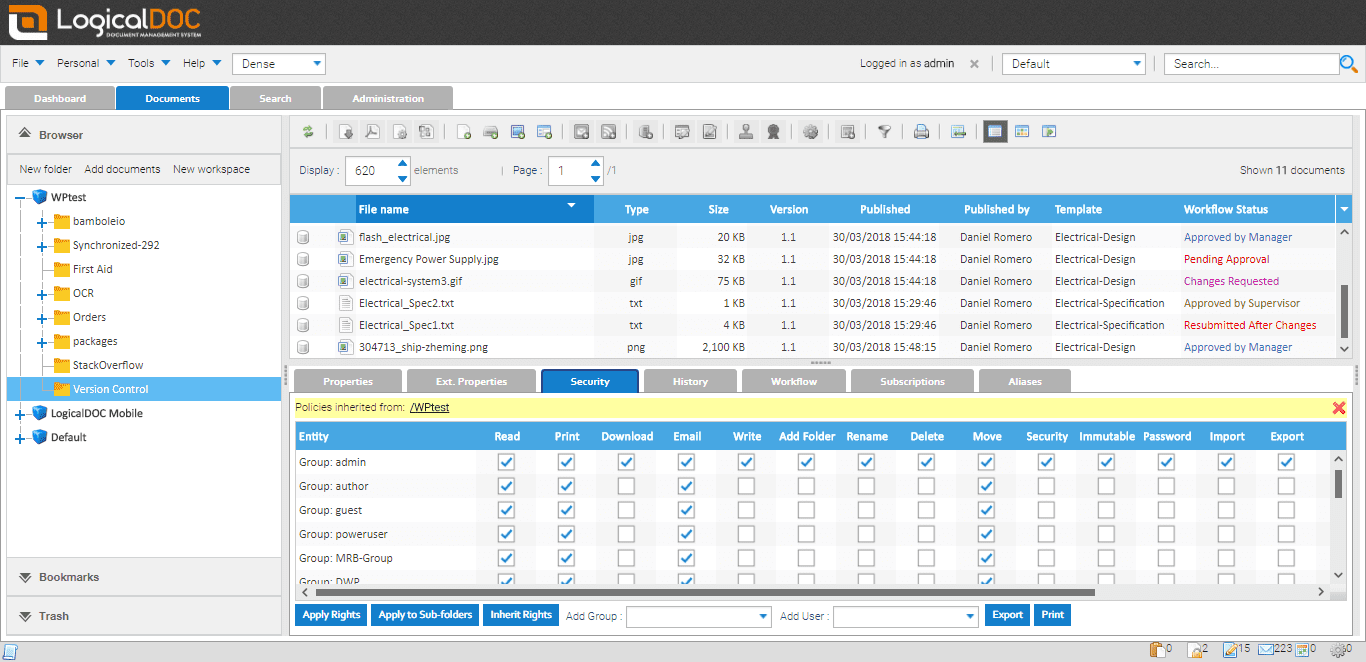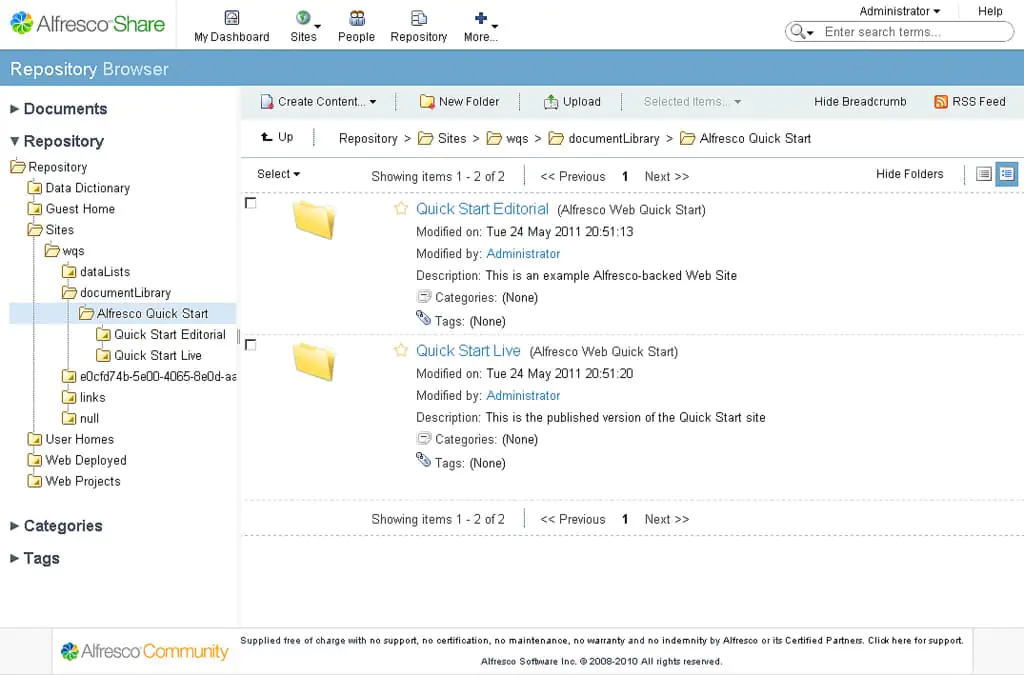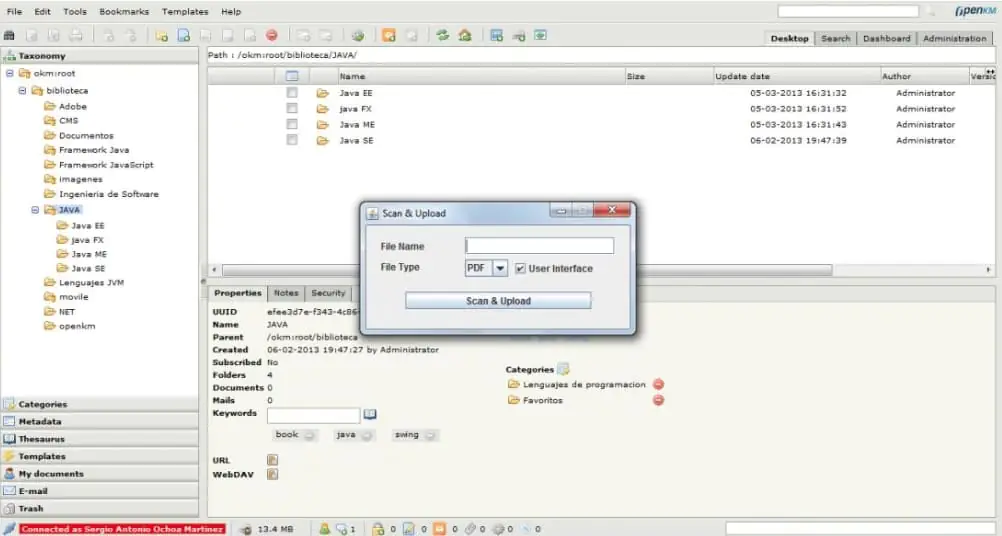How to Choose the Right Enterprise Content Management System?

Successful organizations come to business content management solutions giving serious consideration. Cloud, mobile, social technologies excite them to put the content on the first step of the podium.
Business content is only that matters. Digitize and conquer is the path to victory.
Discovering new content-enabled systems, companies get a value from automation of routine processing, rigor flows of control, easy access and deep-laid storage of proper content.
Whether you need ECM for fair?
To gain the understanding, if you need a content management software for enterprise survey yourself:
- Can you find at once a proper document talking to a valuable partner by phone?
- Can you tell exactly which of commissions instructed by you are executed and which are expired?
- Are you okay with that stack of papers on your desk?
- Are you sure that the current speed of confirming process doesn’t jeopardize the positive image of your company?
- Can you say confidently on which stage a document revised by you is at the moment?
If you answered less than three questions positively, then it is time to think seriously about implementing the electronic content management system.
What is an Enterprise Content Management System?
Content produced by company employees and come from outside is involved in an active content flow of business. To put it bluntly, it is all written information created internally and arriving externally. Internal content relates to accounting, financial records, and reports, customer care papers and guides, operational documents (meeting minutes, proposals, contracts, emails, etc.), administrative guides and policies, project documentation, etc. External content (contracts, invoices, payment vouchers, marketing collateral, etc.) intersects sometimes with internal one. To put in order all chunks of printed, scanned and digital documents, enterprise content management solutions come to the rescue.
Enterprise content management systems are invented to manage the processes during the full cycle of document journey. It comes to creation, sharing, revision, review, and publication in a collaborative environment. A well-designed enterprise content management platform has a rich set of tools to optimize work with content at every stage. Third-party applications are worth saying in this context because they compensate for the lack of functionality if it happens. One of the distinguishing feature clients favor for a content management system in electronic form is centralized content storing which ensures structured files storing and version control within one digital space.
To gain the understanding of enterprise content management software capabilities, let’s go through the key features:
- document management (issued/returned, version control, security, grouping);

Image 1. Folder security permissions in LogicalDOC content management platform
- collaborative work with shared documents;
- support of project teams;
- record retention, storage, and retrieval;

Image 2. Repository for storing and retrieving documents in Alfresco enterprise content management system
- policy-based filing and archival structure;
- scanning documents for capture from physical documents;

Image 3.Scanning option in Openkm CMS for enterprise
- support documents for distributed, centralized and web-based scanning;
- content approval and publishing process under a strong workflow;
- web content management and publishing.
Given the great diversity of ways, the company produces content a wide range of enterprise content management tools to cover the needs had been reached. For example, libraries are responsible for storing, capture, scanning and recognition services complete content digitization, tagging is carried out by metadata management tools. The same applies to workflow management and BPM.
Speaking about ECM on-premise, we can’t help touching on the issue of web content management vs enterprise content management. Many confuse with the function of the first and the second. Let’s shed light on it. First of all, they are not the same in usage. The WCM refers to the wide range of processes related to content uploading, proper display (textual, aural, or visual) and management ensured by CMS system. In its turn, the best ECM solution facilitates content management within one organization in a clearly defined flow embracing all departments with role hierarchy. Unlike WCM, the ECM is a corporate content management system empowered to regulate document flow.
Before starting to evaluate best ecm software tools, you should reflect on what you expect from enterprise level content management systems, outline why you want it, and clarify must-haves presented in it. Having multiple discussions with our customers over the meetings, we’ve come to the list of strong points on how to choose a content management system.
Choosing the right ECM system
The enterprise content management tools list commercially available has exceeded one hundred grade. Regardless of your business needs, you most likely go into the following patterns carefully while choosing among top enterprise content management systems.
1. Compatibility
A new system accurately integrated with your existing infrastructure has to respect settled comprehensiveness and severity of work with content. A top enterprise content management system will unlock your content with a variety of databases, file, and data storage devices, set up rules, protocols under the protection of proven security stack. For good measure, your run CRM or ERP applications can be compatible with document management software for your enterprise via APIs, out-of-the-box solutions or custom developed connectors.
The compatibility plays the key role in the case when a client has already the off-the-shelf software solutions and needs to add a part responsible for documents management. We have experienced a client’s request to us with an operated website served as a storage of documents like an online library. The issue was solved by combining two power systems. We have integrated Alfresco with Liferay (current software) transferring all articles from the legacy storage to the latter-day hub based on Alfresco.
2. ECM capabilities
The ECM system main concern is its ability to build enterprise content management process putting in order the entire lifecycle of unstructured content. If this problem is considered, six core enterprise content management capabilities are in the front: 1) full-text and filtered search, 2) manual and inherited metadata, classification, and taxonomies, 3) versioning to let you recover previous versions, 4) rendition support for automatically generating PDF, XML, HTML, AutoCAD and other types of files, 5) compound document support for small documents to be incorporated into any master document being so significant for procedural documentation, and 6) automated document workflow to streamline manual and paper-based processes.
3. Access from anywhere
The clue to the mystery why your employees could lose or delay the documents may lie in a bad adoption of the new document management system for enterprise. The BYOD phenomenon (Bring Your Own Device), as outlined by Dave Evans, Cisco chief futurist, spread worldwide in organizations. The main point at issue is to provide secure access to the content across variable devices, to tune up a well-thought control under it and combine with the desired workflow.
In our portfolio, you can find a processing system of incoming emails. Alfresco lets upload email attachments into the repository automatically and apply metadata with response to the subject of an email. The task was to enable users to send documents uploaded from their mobile phones directly into the corporate Alfresco ECM. We’ve done that work.
4. Seamless integration
Accessibility of documents, images, audios, videos, faxes or application forms to the right users is of chief priority. Being stored and secured only the content doesn’t work beneficently. It happens that distributed file stores are isolated with invoices, orders, forms and claims (documents which are highly important to be natively extracted from open to general use applications). A seamless integration combines together scattered content under one controlling system and distributes it to all business users by means of different devices.
5. Automated files processing
The mistakes are natural and inevitable while capturing and processing files manually. Automated paper-based processes like scanning, recognition, classifying, and integrating will minimize human errors, accelerate transactions, locate documents more quickly sharing them via the corporate Intranet, etc. Among other things advantages are the cost savings on physical data storages, so your right ECM system is going to keep content digital on a server.
The mistakes are natural and inevitable while capturing and processing files manually. Automated paper-based processes like scanning, recognition, classifying, and integrating will minimize human errors, accelerate transactions, locate documents more quickly sharing them via the corporate Intranet, etc. Among other things advantages are the cost savings on physical data storages, so your best ECM solution is going to keep content digital on a server. Automated files processing put itself in a good light in the urban project for one Danish city. We developed a full-blown online storage for keeping design plans and specifications associated with all buildings of the city. Any citizen can browse the portal and find his dwelling house with a zip code, watch and download design drawings. The things were done in the following way: files were uploaded, then the system recognized types of files, converted them and classified accordingly to adjusted parameters in the system. It resulted in a useful document for the user review.
6. Records Management and Retention
When a compliance-sensitive content management is extremely attractive to enterprises, it is worth to hold and dispose the information under prescribed records management and retention policy. Withing ECM system it has to be kept under control all spectrum of actions with business content from the creation to destruction. Companies with an eye to the future struggling to optimize content assets can save on data storages due to manually adjusted and automatically removing useless files.
Lifehack: automatic archiving of documents related to the upload date of files will put to rights your papers easy.
Given method of document management helped our clients to do their business intelligently.
7. Workflow
If a workflow is your chief requirement, an Alfresco Activiti toolset may stand in good stead perfectly. At the same time with business process management capabilities for developers and no tech-savvy users, it takes over a wide range of choice of critical processes. For all of that, you win integrating Alfresco Activity with a number of document management systems for enterprise. Pay attention, however, it may require dedicated developers to adjust some open source modules to your enterprise preferences for document management system. The workflow developed in Alfresco Activity can be deployed in Alfresco ECM using all its features. For instance, users, documents, permissions, access to emails, interaction with connected Alfresco modules and other actions are available.
The workflow developed in Alfresco Activity can be deployed in Alfresco ECM using all its features. For instance, users, documents, permissions, access to emails, interaction with connected Alfresco modules and other actions are available.
8. Digital content
Now came the great question as to the reason of managing the digital assets such as images, drawings, audios and videos required special processing because of their large file sizes and metadata requirements. A rich media management system would relieve in that case improving content usage with native versions of files and avoiding duplication. Standing on the copyrighted policy materials are ensured to be used in the due and regular form.
Best Enterprise Content Management Systems
We have taken up so far eight major patterns which can help every business owner to choose the best enterprise document management software. And in conclusion, let us talk about ECM strategy. The game is not worth the candle if a company doesn’t have a far-sighted strategy to treat documents. In this vein, the strategy will be concluded in a smart retention of content.
An international practice of document retention requires businesses by law to retain confidential information concerning clients, employees, and operational activity of the firm for a specified amount of time. It’s happening to the developed countries like the USA, the UK, members of the European Union and several other countries. According to the Data Retention Directive issued by the EU in 2006, electronic data have to be stored during the period from six to 24 months. In the UK, for example, according to the HM Revenue and Customs retention policy, six years + 1 is defined as the default standard retention period for HMRC records. These tones of paper files have to be digitized for retention and archiving in the right way. The best enterprise content management systems are designed to comply with regulations as well.
It’s logically to wonder: what is the best enterprise content management system to manage all that mixed content under the law? Let’s consider the list of enterprise content management systems.
Up to Gartner Peer insights, in 2018 ECM tools list looks this way:
- SharePoint by Microsoft;
- Canadian OpenText;
- OnBase by Hyland Software Inc;
- Box;
- Oracle WebCenter Content;
- Alfresco;
- Veeva Vault ECM platform and suite apps;
- SER Group;
- Laserfiche;
- Adobe Experience Manager.
Final accord
Putting all together we hope listed above have sounded through you on the way of changes for better. You may have some unique specifications for your enterprise were not mentioned here. To cover them we are open for a mutual dialog in upcoming blog posts and direct messages. We hope you will consider us as ECM consultants and Alfresco solutions provider to go ahead with your specific requirements.




